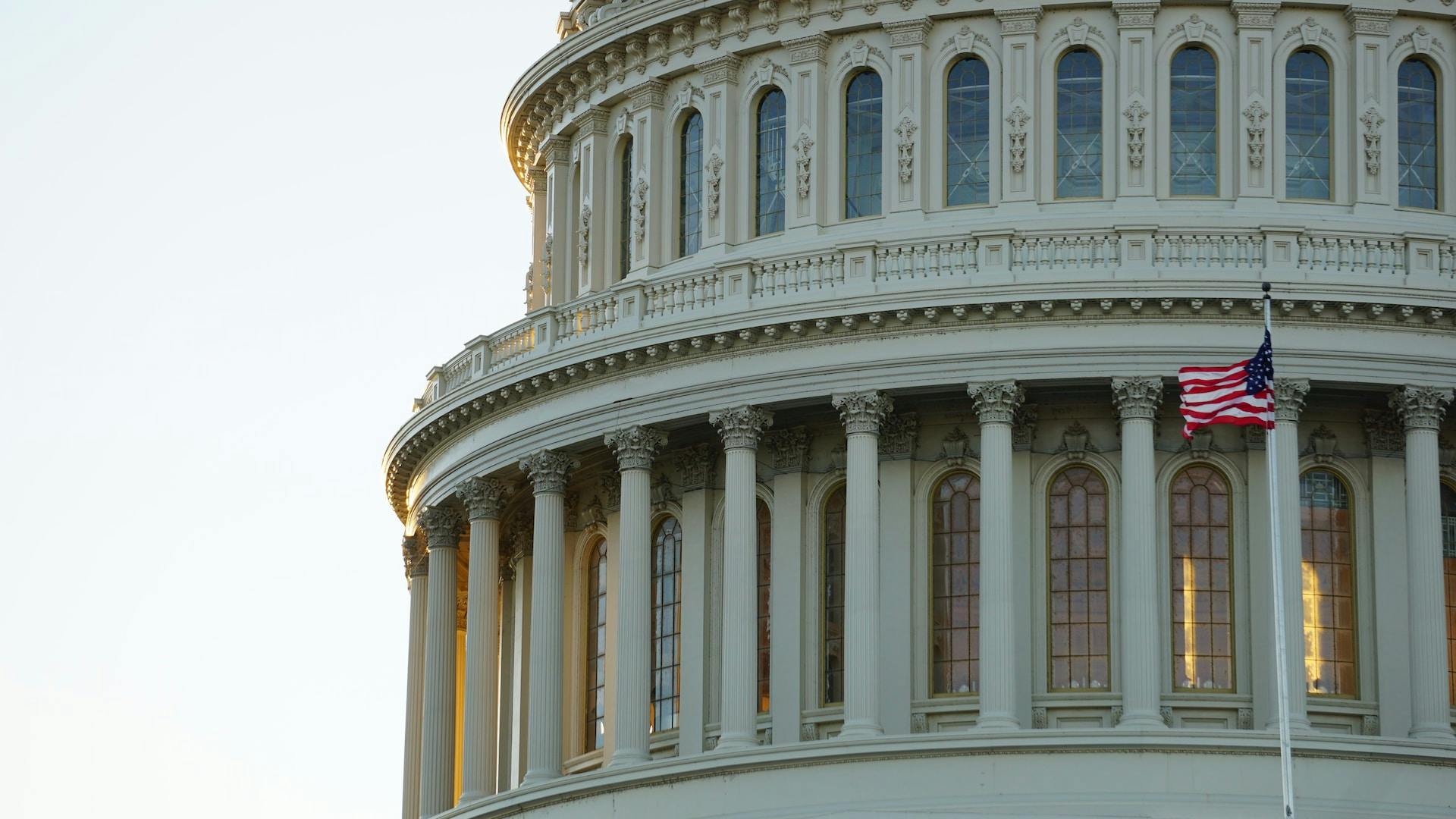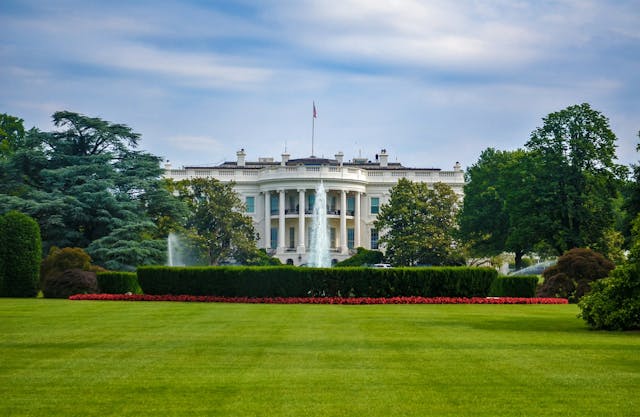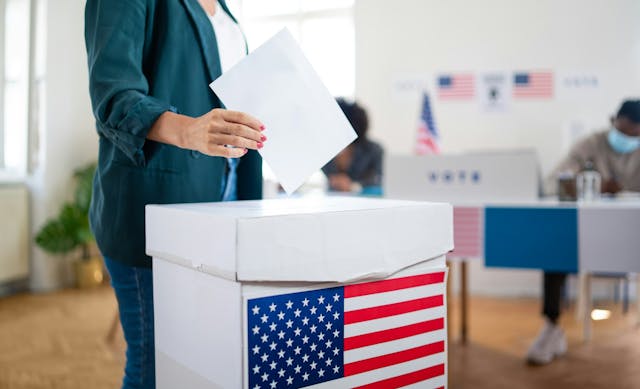Can Proportional Representation Mend the Fractures In Our Political System -- Or Would It Make Them Worse?

Editor's Note: This conversation on proportional representation originally published on Divided We Fall and features two perspectives on the subject -- one from Fix Our House Partnerships and Communications Coordinator Dustin Wahl and the other from Robert Litan, a non-resident Senior Fellow at the Brookings Institution. Both sides are featured on IVN with permission from Divided We Fall.
Fighting “Mega-Identities” for a More Effective, Representative Government
By Dustin Wahl – Partnerships and Communications Coordinator, Fix Our House
It’s well understood that America is intensely divided today and that our divisions have worsened over time. But when did politics turn into an “us-vs-them” war? After all, America has had two major political parties for most of its history. Hard-fought elections, highly charged disagreements, and even political violence are nothing new. So, is the division we feel today exaggerated and should we just get used to it?
Failings of the Two-Party System
In “Why We’re Polarized,” Ezra Klein argues that America’s disagreements are not more dramatic nor our beliefs more divergent than ever before. The problem, rather, is that we are more neatly sorted by partisan lines. America used to have something similar to a four-party system, including conservative Democrats and liberal Republicans. So while disagreements could be great, the two parties were not necessarily pitted directly against each other.
Now, partisanship has become a “mega-identity” and the clash between mega-identities has turned politics hateful and loathsome. The number of people in both parties who say that the other party is immoral has increased by at least 25 percentage points since 2016, according to Pew Research. In such a polarized environment, the electoral incentives for our representatives are clear: fall in line and don’t work with the enemy or you might not be around long. There is little freedom to negotiate and govern, even in areas of shared interests or beliefs across party lines.
The Potential of Proportional Representation
In America’s winner-take-all elections, candidates just need to get one more vote than their opponent in order to win the seat, and the loser is left with nothing. This incentivizes both parties to treat elections like existential battles. Fortunately, though, there are other, better election systems.
In a system of proportional representation, multiple candidates could be elected in proportion to the amount of support for their party—winning 30 percent of votes would mean 30 percent of seats. Elections would not be all-or-nothing binary struggles to dominate or be dominated. And crucially, everyone could now be represented—liberals in rural “red” areas, conservatives in urban “blue” areas, and everyone in between.
As we see in the overwhelming majority of democratic countries using proportional representation, the system is much better at managing conflict, incentivizing compromise, and representing all. It wouldn’t suddenly heal America’s intense division or solve all the problems we face. But it would help make politics less of an existential war. So, it would be easier to problem-solve and govern—the things our representative government is supposed to do.
The Pitfalls and Potential Behind Solutions to Polarization
By Robert Litan – Non-Resident Senior Fellow, Brookings Institution
In the past five decades, the United States has never been more politically polarized. And while there remains ideological diversity within each party, red-blue polarization is responsible for increasing political dysfunction—not just federally, but increasingly at the state and even local levels. This dysfunction makes it near-impossible to address social problems collectively, in turn, feeding polarization in a vicious cycle.
Limitations to Reform
Promoting moderation in elected representative bodies would lead to more legislative compromise, which would then improve citizens’ confidence in the government—a virtuous cycle. This should be a national objective, but other commonly proposed voting systems are not the solution. For example, ranked-choice voting, a system where voters indicate their preferred candidate ordering, has been touted for increasing the odds of moderates winning. But that doesn’t always happen. Another theoretically promising voting reform is the “top-two” primary system used in California. The two candidates with the most votes advance to the general election, regardless of party. Yet the evidence is mixed, at best, if that system promotes moderation.
Some, like Mr. Wahl, have suggested adopting proportional representation. That system may work for local city councils, but I don’t see how it could work for Congress. There has to be a single winner in congressional races because you can’t create “portions” of people. To be fair, the U.S. could replace its current system of geographically-based representation with proportional representation at the national congressional level—or, in other words, something similar to a national parliamentary system. But that type of government hasn’t been shown to mute polarization, such as in Israel or many European countries.
But there is a more fundamental issue at hand: Even if there were reforms to promote moderation, a polarized electorate would not elect candidates that support such reforms. Likewise, those in office who owe their seats to a polarized electorate have no political incentives to adopt such reforms.
Four Hypothetical Scenarios to End Polarization
First, there is the non-trivial possibility that the “very large portion” of Republicans who don’t believe in the Constitution, according to a recent biography of retiring Senator Mitt Romney (R-Utah), will elect candidates to the presidency and gain control of Congress. They could end democracy as we know it. To put it mildly, that’s one awful way to end polarization.
Second, the “silent majority” of Americans in the middle of the political spectrum gets disgusted enough with the extremes in both political parties and supports a viable third party. In a winner-take-all system, that new centrist party would win the presidency and a sufficient number of seats in Congress, marginalizing the two current political parties. This seems unlikely (even more so than the first, authoritarian scenario), but it is important to consider, as we are in uncharted territory.
A third possibility is that voters in both parties become sufficiently fed up with parties’ extremism, returning to some version of traditional conservatism (Republicans) and moderate progressivism (Democrats). Again, it is a non-trivial possibility that somehow America returns to a kind of political normalcy that readers my age, 73, grew up with.
Finally, some external event—perhaps a major attack on the United States—could cause enough Americans to put aside their political differences to join in common cause, as happened in World War II and for a couple of decades thereafter. I prefer scenarios two and three, reducing polarization without much harm and I hope readers do, too.
We Need to Diffuse America’s Polarization Crisis
By Dustin Wahl
I agree that in America today there is a very real risk of democratic backsliding into authoritarianism. In fact, this concern is the greatest motivation for my work in electoral reform. Without major structural change, the level of dysfunction in America’s political system is unsustainable.
But that points to our main source of disagreement: I don’t believe America’s broken political system can improve on its own. Mr. Litan argues that one possibility is for voters to become “sufficiently fed up,” leading to new political parties or at least a less extremely polarized partisan landscape. But while voters are getting more fed up every day, their anger is not directed at abstract concepts of polarization and dysfunction. It’s directed at each other.
Growing numbers of Americans see the “other side” as an enemy and an existential threat to their way of life, according to Pew Research This hasn’t led to replacing Congress. In fact, incumbent representatives were elected in record numbers last year because 90 percent of districts were uncompetitive in 2022. Intense heat and pressure are building up with nowhere to go. America is stuck in a pressure cooker without a release valve.
Proportional Representation is the Right Kind of Reform
We agree that some electoral reform options aren’t effective enough. Ranked choice voting and the top-two system are well-intentioned and have shown limited positive results. But these tweaks to how voters cast ballots do nothing to address the fundamental problem that our winner-take-all electoral system pits us against each other in an escalating existential struggle.
The right kind of electoral reform—proportional representation—could offer a release that allows intense partisan divisions to diffuse without exploding. It’s possible in Congress, as well as locally. This would not require amending the Constitution or moving to a parliamentary system. If Congress adopted multi-member districts, multiple representatives could be elected in proportion to their party’s amount of support. Republicans in Massachusetts, currently voiceless in Congress, would then have a chance to win representation. So would Democrats in Oklahoma. This would have a moderating effect, and it would give all voters an effective voice, no matter where they live.
Mr. Litan raises Israel as an example of a proportional country with political dysfunction. But Israel is an extreme outlier. The entire country is just one district, and parties can win seats with a tiny percentage of the vote. No one would propose this system for the U.S. In contrast, most proportional democracies have fared significantly better than the U.S. in the last several years, in part because our winner-take-all system is uniquely advantageous for authoritarians.
Authoritarians around the world have taken note. Hungary’s President Viktor Orbán moved away from proportional representation in an attempt to solidify his control of the country. Orbán adopted more U.S.-style winner-take-all districts precisely because it would benefit his side.
Getting Ready for Change
Experts on democracy have also taken note. Last year, more than 200 political scientists, legal scholars, and historians signed an open letter calling on the U.S. Congress to adopt proportional representation. Major reform is not likely right now, but our level of dysfunction and extreme polarization is not sustainable. History shows again and again how periods of stagnation and dysfunction eventually break open and create windows of opportunity for reform. It’s the old maxim: Change happens slowly at first, then all at once.
We need to prepare for this kind of moment—whether after catastrophe or, hopefully, due to a fresh consensus that America has systemic problems that demand systemic solutions. Proportional representation is crucial to get us out of this mess. We should understand and promote it now, so it’s ready if and when a window for reform opens.
Breaking Our Dysfunctional Stasis
By Robert Litan
Mr. Wahl and I certainly agree we are at real risk of “sliding into authoritarianism.” We also agree that our political system is broken. Indeed, it is not just that our politics are polarized, but that our entire society is fractured across multiple dimensions.
Additionally, Mr. Wahl and I partially agree that our political dysfunction is unsustainable. The reason I say “partially” is that unfortunately, dysfunction can continue for a long while. For example, it is widely expected that the federal government will shut down again, primarily because of chaos in the House Republican conference, but also because Democrats have not seen it in their political interest to vote for any Republican for Speaker. Unfortunately, shutdowns have become normalized since the Gingrich revolution in the mid-1990s, and yet here we are, almost thirty years later: the Republic is still standing and the economy has continued growing.
Where Mr. Wahl and I disagree is whether his proposed solution—proportional representation at the Congressional level—will get us to a more benign outcome. That it won’t is underscored by a statistic he cites: over 90 percent of Congressional districts are uncompetitive. The point is that politicians are rational actors whose primary interest will always be to get reelected and will not vote for a new system that threatens them. In other words, the ideal end-game solution is not the solution for the transition to getting there.
How Do We Fix a Broken System? I Don’t Know.
Saying I don’t know is a perfectly acceptable answer, especially when it’s the truth. Peggy Noonan, the Wall Street Journal’s columnist, penned this thought In her October 5th column: “The central fact of the two parties now is that one is dominated by a policy cult (extreme stands on crime and illegal immigration) and the other by a personality cult (Donald Trump). People in cults don’t think, they only defend against whatever seems a threat or exploit what they think again. Something has to come along and break through the stasis. Something will, but I don’t know what.”
The very day this column appeared, Hamas mounted a shocking and unexpected attack on Israel, the same country whose own political dysfunction I invoked in my opening response. As I write this, the attack on the country’s homeland has totally united the country. Bitter political opponents have put their differences aside at a time of existential threat.
America experienced a similarly uniting experience in the aftermath of Pearl Harbor and again after the 9/11 attack. The question is whether another shock—for example, a Chinese attack in Taiwan which could have untold consequences on the United States, especially if such an attack were coupled with cyber-attacks on the U.S.—is required or if we are so divided that we couldn’t meet that threat. Let’s hope it doesn’t come to that.



